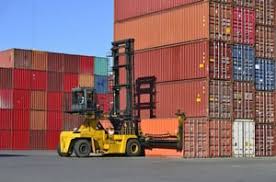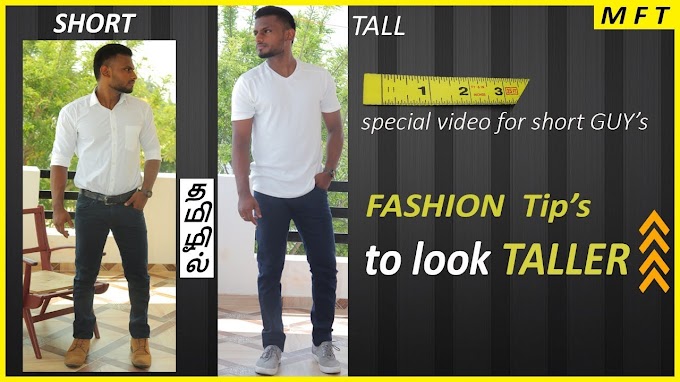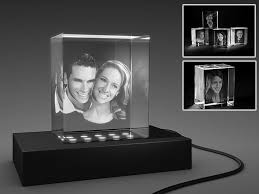Design Your Own Shoes - Freaky Shoes
Shoe material supply chain The challenges of sourcing footwear materials. The challenges of sourcing footwear materials.When looking at the supply chain for a specific material, there are four main factors to consider which include the country of origin and the vendor purchase terms. These factors along with others will be different for every material you specify. What are the materials used to make shoes? Shoe fabrics, shoe leather, synthetic mesh, what materials are basketball shoes made of, and more. Remember, even a simple shoe can have materials from over a dozen different shoe material suppliers.
Exotic and illegal materials How to know if rare materials are safe and legal to use. How to know if rare materials are safe and legal to use. Exotic animal hides like snake, ostrich, alligator, and even elephant are used in footwear to create drama, luxury, mystique and a feeling of exclusivity. What do they cost and how do you work with them?
Building a shoe material library Tips and techniques for collecting material swatch books. Tips and techniques for collecting material swatch books. It is critical to build a library of relevant material swatches and sample books. Having materials on hand allows you to communicate what the new design will look like to product managers, sales managers, or customers. How to get the most from shoe material vendors, shoe material suppliers, and shoe material manufacturers.
Sustainable shoe production How to reduce the environmental impact of your shoes.How to reduce the environmental impact of your shoes. Footwear designers, shoe developers, product managers, and factories can make choices to help reduce the negative environmental and social impacts of shoe production. We will consider different aspects of shoe production that can make your shoes more or less environmentally sustainable.
Shoe dissections Cross section views of popular shoe styles. The best way to understand how materials are used is to see for yourself! Cross section views of popular shoe styles. The best way to understand how materials are used is to see for yourself! We have saved you some time, effort, and money by collecting 35 different shoe models for you to study. Each shoe has been photographed, opened up, and labeled to expose and review its internal construction. See what Nike Shoes are made out of, what Vans shoes are made out of, what women's shoes are made out of, how a running shoe is made, what are the best materials for shoes, what hiking boots are made out of, how a basketball shoe is made and more. You're going to love this!
shoe materials supplier sneaker materials list Shoe material vendor list Where to find top quality shoe materials. A listing of our favorites and their websites. Shoe material makers. Shoe material vendors. Shoe material suppliers. Shoe materials supplier information and sneaker materials list are listed in detail.
Depending on the import rules for your country, textiles are often a higher dutyrate. Shoes made with 51% textile surface area are sometimes 20%. A textile shoecosting less than $12.50 USD will be 20% +.90 duty! (depending on the country).However, there is a trick, by molding textile on the sole of the shoe you can avoid thehigh duty rates. Whatever you call it, synthetic, synthetic leather, PUleather, or just PU, thismaterial is another must-have for modern sports shoes. This class of material offers theshoe designer a huge variety of colors, textures, and features at a wide range of prices. Itwas once considered to be cheap junk not suitable for high-quality shoes, times havechanged. These man-made materials are often a composite made of two layers. A backing layer made of woven or non-woven polyester fibers combined with an external surface by “dry” lamination process or by liquid “wet” processes. Many of the leastexpensive synthetics have a fibrous woven backing with PVC skin made by a wet process. The surface on these may not be 100% smooth and the shoe willshow wrinkles and creases. This material is the cheap stuff found on inexpensive shoes.
High-end leather starts with a water-resistant microfiber PU backing. This backing has a smooth surface, cuts cleanly, and can be dyed to match the surfacematerials. A microfiber style backing can be ordered in .5 to 2.00mm thicknesses, hassome stretch, and can have a water-resistant treatment. On top of this backing, the skincan be applied.Polyurethane plastic film .2 to .5mm thick is made in a separate operation andthe two layers are then rolled together with heat and pressure. PU outer skin is then printed, embossed, scuffed or polished to create one of the millions of surface options.The largest PU maker has hundreds of different embossing patterns that can be appliedto hundreds of different surfaces. If you can meet the order volume required, you can pick any color you want.
There are many types of foam used to make shoes, here we are going to reviewthe types of foam found in the uppers of shoes. Generally, foam is divided into two types, “Open Cell” and “Closed Cell” foam. Open cell is exactly what it sounds like, the plastic compound that makes up the foam cells is open, air and water are free toenter and exit the foam just like a dishwashing sponge. Closed-cell foam is exactly that,individual cells are closed or sealed not allowing the foams internal gas to escape.
Open-cell foam is generally softer, these foams are made of Polyurethane plastic.This type of foam is commonly known as “KF or KFF” foam Open-cell foam isavailable in different densities and in almost any thickness and color. Open-cell foamis used in the tongues and collars of shoes. Thin sheets of PU are used to backfabric in the most shoes uppers. PU foam allows the stitches to sink in and gives meshsome extra support while reducing wrinkles. Reticulated foam is the most open style offoam. This type is often used for ventilation features. Closed-cell foam is generally denser. Midsoles of shoes are all made from closedcell foam. Midsolefoam is covered the article Outsole Design.Common Closed cellfoams include EVA(ethyl vinyl acetate), PE (Polyethylene), SBR Styrene butadienerubber), PU (Polyurethane), Latex, and Neoprene are the most common types. Each hasits own properties. EVA foamis used for backing mesh materials, 2mm sheet EVA willmake the fabric waterproof. Neoprene and SBR are used when elastic propertiesrequired. Latex is common for collarlinings. PE foam is very light but not so durableso its use is limited.When working with foam it is important to know what foam is appropriate forthe shoe upper and what is appropriate for cushioning the shoe There is no best material for shoes. What is best for a running shoe is not the bestmaterial for a work boot. The shoe designer, footwear developer, and product managermust work together to pick materials based on the price, performance, durability, dutyrates, comfort and styling. Every shoe will have a different material requirement
Men are simple and like things to be as uncomplicated as possible – especially when it comes to our wardrobe. For example: if we’re going to the gym, we grab gym shorts and gym shoes. A trip to the beach means swim trunks and sandals. And anything that isn’t a sneaker or a sandal gets classified in the overwhelming category of “dress shoes”, right?
Kicking off our men’s shoe guide is the mighty Oxford (or a Balmoral for our UK blokes), probably the best-known type of dress shoe. The Oxford is a sleek, formal lace-up shoe identified by it’s “closed” lacing style and the appeal that the shoe is made from one piece of leather. The closed style means that the eyelet flaps on top of the shoe are stitched over the vamp, or the front section of the shoe, restricting the flap’s movement. Oxfords are usually worn in more formal situations, but can also be worn casually with a business suit. You might hear someone call this shoe a “closed front”, but it’s okay, you know they mean Oxford.
When it comes to the various types of men’s shoes, there’s actually a hierarchy. To put it another way: not all types of dress shoes are created equal. But don’t freak out just yet. We’re here to go over the differences between an Oxford and a Derby, lace-ups and slip-ons and the other types of men’s dress shoes. Presenting the Men’s Shoe Guide: 12 Types of Men’s Shoes.
Often confused with the Oxford, the Derby is a close shoe relative, but not the same type of men’s shoe. Rather than having a closed lacing system like the Oxford, the Derby sports an open lacing system with the flaps being sewn under the vamp and not connected at front of the shoe. This style of stitching makes the flaps capable of movement and when laced the shoe looks as if it’s broken up into segments (top, side, back, etc.) Originally a sporting shoe, the Derby was used in more relaxed environments like hunting. Although a Derby could be worn in formal settings, it is more casual than an Oxford and could arguably make for a more comfortable, functional fit.
Build Custom ShoesIn the U.S., Derby’s and Bluchers are often used interchangeably to describe the open front lace style, but they’re actually two slightly different types of men’s shoes. If you pay close enough attention, you’ll see that Derby’s have the two sides sewn under the vamp, whereas Bluchers connect the two sides onto the vamp. Very similar, but it isn’t quite tomato/tomato.
Ahh, the Chelsea Boot. The favourited boot style of rock icons The Beatles and badass galaxy soldiers in George Lucas’ original Star Wars trilogy (yup, stormtroopers have a thing for Chelsea Boots). That easily makes it one of our favourites types of dress shoes as well. Originated during the Victorian era, but made mainstream cool in the 60s, this snug style of ankle boot is classified by its low heel, fabric tab on its’ backside and slip-on/slip off quality thanks to its elastic side panelling. Chelsea Boots have rounded toes and are versatile enough to be worn with jeans or a suit.
Identified by its wide heel and slip-on capabilities, the Loafer was inspired by mocassins; the shoe of choice for Native Americans. Like Oxfords, Moccasins come in a variety of lace-less styles (tassel, penny loafer, monk strap, etc.). Regardless of style, when it comes to the various types of men’s shoes, Loafers are generally considered to be the most casual. You can throw on a pair of loafers for a night on the dance floor with jeans or pair it with a suit – but we wouldn’t recommend loafers to wear anywhere fancy.
Brogue shoes are a style of Oxford, Blucher or Loafer that come with a perforated design punched along the edge of the leather overlapping the vamp. In short, Brogue is the style of shoes with the holes and thereby it’s own type of men’s dress shoe. But there are also types of Brogues and that’s worth distinguishing further. Hence we’re about to go all types of dress shoes within types of dress shoes on you, Inception-style. Here are the 3 most popular Brogue shoes:
Chukkas are a Derby styled ankle boot. Typically made from calfskin or suede, chukkas are created by using two to three sets of eyelets and an open lacing system to secure the quarters over the tongue of the boot.
Desert Boots are a type of Chukka, but Chukka Boots aren’t always Desert Boots. Confused? Ok, here’s the breakdown. Desert Boots were named after the light brown suede ankle boots the British soldiers wore during the desert campaign in WWII. Although very similar to the Chukka in style the different between Desert Boots and Chukkas is in their sole makeup. Desert Boots have a rubber sole and chukkas have a leather sole. Got it?
The Monk Strap style is defined as any shoe that uses a strap and a buckle instead of rather than laces to secure the foot in the shoe. When there’s a broader strap with two buckles, that’s called a Double Monk. Seems easy enough…
And capping off our men’s shoe guide is the boat shoe, which should be worn…well, on a boat. Before you start having Jay-Z fantasies about galavanting around on your 100-foot yacht, realize that boat shoes aren’t just a fashionable style of shoe, but they actually have a functional purpose. These shoes come equipped with an anti-slip rubber to accommodate walking (or partying) on wet decks. Usually, Boat Shoes (or Deck Shoes) come as Derbies or Bluchers in the Loafer style with the leather shoelaces tying over the tongue of the shoe. The typical Boat Shoe has a leather lace woven through the collar of the shoe and tying over the tongue of the shoe, to secure the shoe more tightly. Pair Boat Shoes with your most fitting yacht wear or pool clothes for a fashionable no-slip grip shoe option.





.jpg)


.jpg)


.jpg)
